-
CD4 + T cells with convergent TCR recombination reprogram stroma and halt tumor progression in adoptive therapy Sci. Immunol (IF 17.6) Pub Date : 2024-09-13 Steven P. Wolf, Matthias Leisegang, Madeline Steiner, Veronika Wallace, Kazuma Kiyotani, Yifei Hu, Leonie Rosenberger, Jun Huang, Karin Schreiber, Yusuke Nakamura, Andrea Schietinger, Hans Schreiber
Cancers eventually kill hosts even when infiltrated by cancer-specific T cells. We examined whether cancer-specific T cell receptors of CD4 + T cells (CD4TCRs) from tumor-bearing hosts can be exploited for adoptive TCR therapy. We focused on CD4TCRs targeting an autochthonous mutant neoantigen that is only presented by stroma surrounding the MHC class II–negative cancer cells. The 11 most common tetramer-sorted
-
Expansion of tumor-reactive CD8 + T cell clonotypes occurs in the spleen in response to immune checkpoint blockade Sci. Immunol (IF 17.6) Pub Date : 2024-09-13 Duncan M. Morgan, Brendan L. Horton, Vidit Bhandarkar, Richard Van, Teresa Dinter, Maria Zagorulya, J. Christopher Love, Stefani Spranger
Immune checkpoint blockade (ICB) enhances T cell responses against cancer, leading to long-term survival in a fraction of patients. CD8 + T cell differentiation in response to chronic antigen stimulation is highly complex, and it remains unclear precisely which T cell differentiation states at which anatomic sites are critical for the response to ICB. We identified an intermediate-exhausted population
-
Pre-vax metabolic clues: Cracking the code to a better dengue vaccine. Sci. Immunol (IF 17.6) Pub Date : 2024-09-06 Fahima Akther,David R Martinez
Multi-omic analysis deciphers the impact of cell-intrinsic and systemic metabolomes on dengue vaccination immunogenicity.
-
When a double negative is not a positive: Autoantibodies against IL-10 in patients with inflammatory bowel disease. Sci. Immunol (IF 17.6) Pub Date : 2024-09-06 Colleen M Noviello
IL-10 autoantibodies are detected in two patients with severe inflammatory bowel disease.
-
IgE plasma cells are transcriptionally and functionally distinct from other isotypes Sci. Immunol (IF 17.6) Pub Date : 2024-09-06 Andrea Vecchione, Joseph C. Devlin, Carley Tasker, Venkat Raman Ramnarayan, Paul Haase, Eva Conde, Devin Srivastava, Gurinder S. Atwal, Pierre Bruhns, Andrew J. Murphy, Matthew A. Sleeman, Andre Limnander, Wei Keat Lim, Seblewongel Asrat, Jamie M. Orengo
Understanding the phenotypic and transcriptional signature of immunoglobulin E (IgE)–producing cells is fundamental to plasma cell (PC) biology and development of therapeutic interventions for allergy. Here, using a mouse model of intranasal house dust mite (HDM) exposure, we showed that short-lived IgE PCs emerge in lung draining lymph nodes (dLNs) during early exposure (<3 weeks) and long-lived IgE
-
Convergent evolution of monocyte differentiation in adult skin instructs Langerhans cell identity Sci. Immunol (IF 17.6) Pub Date : 2024-09-06 Anna Appios, James Davies, Sofia Sirvent, Stephen Henderson, Sébastien Trzebanski, Johannes Schroth, Morven L. Law, Inês Boal Carvalho, Marlene Magalhaes Pinto, Cyril Carvalho, Howard Yuan-Hao Kan, Shreya Lovlekar, Christina Major, Andres Vallejo, Nigel J. Hall, Michael Ardern-Jones, Zhaoyuan Liu, Florent Ginhoux, Sian M. Henson, Rebecca Gentek, Elaine Emmerson, Steffen Jung, Marta E. Polak, Clare
Langerhans cells (LCs) are distinct among phagocytes, functioning both as embryo-derived, tissue-resident macrophages in skin innervation and repair and as migrating professional antigen-presenting cells, a function classically assigned to dendritic cells (DCs). Here, we demonstrate that both intrinsic and extrinsic factors imprint this dual identity. Using ablation of embryo-derived LCs in the murine
-
MAIT cell heterogeneity across paired human tissues reveals specialization of distinct regulatory and enhanced effector profiles Sci. Immunol (IF 17.6) Pub Date : 2024-09-06 Tobias Kammann, Curtis Cai, Takuya Sekine, Elli Mouchtaridi, Caroline Boulouis, Vera Nilsén, Olga Rivera Ballesteros, Thomas R. Müller, Yu Gao, Elisa J. M. Raineri, Akhirunnesa Mily, Sarah Adamo, Christian Constantz, Julia Niessl, Whitney Weigel, Efthymia Kokkinou, Christopher Stamper, Anne Marchalot, John Bassett, Sabrina Ferreira, Inga Rødahl, Nicole Wild, Demi Brownlie, Chris Tibbitt, Jeffrey Y
Mucosal-associated invariant T (MAIT) cells are unconventional T cells that recognize microbial riboflavin pathway metabolites presented by evolutionarily conserved MR1 molecules. We explored the human MAIT cell compartment across organ donor–matched blood, barrier, and lymphoid tissues. MAIT cell population size was donor dependent with distinct tissue compartmentalization patterns and adaptations:
-
The promise of priming precursors: Advances in inducing CD4 binding site-directed HIV broadly neutralizing antibodies. Sci. Immunol (IF 17.6) Pub Date : 2024-08-30 Rama Rao Amara
HIV envelope immunogen designed to activate germline B cell precursors of CD4 binding site-specific neutralizing antibodies shows promise in monkeys.
-
Germline-targeting HIV vaccination induces neutralizing antibodies to the CD4 binding site Sci. Immunol (IF 17.6) Pub Date : 2024-08-30 Tom G. Caniels, Max Medina-Ramìrez, Shiyu Zhang, Sven Kratochvil, Yuejiao Xian, Ja-Hyun Koo, Ronald Derking, Jakob Samsel, Jelle van Schooten, Simone Pecetta, Edward Lamperti, Meng Yuan, María Ríos Carrasco, Iván del Moral Sánchez, Joel D. Allen, Joey H. Bouhuijs, Anila Yasmeen, Thomas J. Ketas, Jonne L. Snitselaar, Tom P. L. Bijl, Isabel Cuella Martin, Jonathan L. Torres, Albert Cupo, Lisa Shirreff
Eliciting potent and broadly neutralizing antibodies (bnAbs) is a major goal in HIV-1 vaccine development. Here, we describe how germline-targeting immunogen BG505 SOSIP germline trimer 1.1 (GT1.1), generated through structure-based design, engages a diverse range of VRC01-class bnAb precursors. A single immunization with GT1.1 expands CD4 binding site (CD4bs)–specific VRC01-class B cells in knock-in
-
Immunization with germ line–targeting SOSIP trimers elicits broadly neutralizing antibody precursors in infant macaques Sci. Immunol (IF 17.6) Pub Date : 2024-08-30 Ashley N. Nelson, Xiaoying Shen, Sravani Vekatayogi, Shiyu Zhang, Gabriel Ozorowski, Maria Dennis, Leigh M. Sewall, Emma Milligan, Dominique Davis, Kaitlyn A. Cross, Yue Chen, Jelle van Schooten, Joshua Eudailey, John Isaac, Saad Memon, Carolyn Weinbaum, Hongmei Gao, Sherry Stanfield-Oakley, Alliyah Byrd, Suni Chutkan, Stella Berendam, Kenneth Cronin, Anila Yasmeen, S. Alam, Celia C. LaBranche, Kenneth
Adolescents are a growing population of people living with HIV. The period between weaning and sexual debut presents a low-risk window for HIV acquisition, making early childhood an ideal time for implementing an immunization regimen. Because the elicitation of broadly neutralizing antibodies (bnAbs) is critical for an effective HIV vaccine, our goal was to assess the ability of a bnAb B cell lineage–designed
-
PPARβ/δ-orchestrated metabolic reprogramming supports the formation and maintenance of memory CD8 + T cells Sci. Immunol (IF 17.6) Pub Date : 2024-08-23 Alessio Bevilacqua, Fabien Franco, Ya-Ting Lu, Nabil Rahiman, Kung-Chi Kao, Yu-Ming Chuang, Yanan Zhu, Werner Held, Xin Xie, Kristin C. Gunsalus, Zhengtao Xiao, Shih-Yu Chen, Ping-Chih Ho
The formation of memory T cells is a fundamental feature of adaptative immunity, allowing the establishment of long-term protection against pathogens. Although emerging evidence suggests that metabolic reprogramming is crucial for memory T cell differentiation and survival, the underlying mechanisms that drive metabolic rewiring in memory T cells remain unclear. Here, we found that up-regulation of
-
Hematopoietic stem cell heterogeneity and age-associated platelet bias are evolutionarily conserved Sci. Immunol (IF 17.6) Pub Date : 2024-08-23 Merve Aksöz, Grigore-Aristide Gafencu, Bilyana Stoilova, Mario Buono, Ying Zhang, Sven Turkalj, Yiran Meng, Niels Asger Jakobsen, Marlen Metzner, Sally-Ann Clark, Ryan Beveridge, Supat Thongjuea, Paresh Vyas, Claus Nerlov
Hematopoietic stem cells (HSCs) reconstitute multilineage human hematopoiesis after clinical bone marrow (BM) transplantation and are the cells of origin of some hematological malignancies. Although HSCs provide multilineage engraftment, individual murine HSCs are lineage biased and contribute unequally to blood cell lineages. Here, we performed high-throughput single-cell RNA sequencing in mice after
-
Mast cell–derived BH4 and serotonin are critical mediators of postoperative pain Sci. Immunol (IF 17.6) Pub Date : 2024-08-23 Philipp Starkl, Gustav Jonsson, Tyler Artner, Bruna Lenfers Turnes, Laura-Marie Gail, Tiago Oliveira, Aakanksha Jain, Nadine Serhan, Karel Stejskal, Karin Lakovits, Anastasiya Hladik, Meilin An, Keith M. Channon, Hail Kim, Thomas Köcher, Wolfgang Weninger, Georg Stary, Sylvia Knapp, Victoria Klang, Nicolas Gaudenzio, Clifford J. Woolf, Shweta Tikoo, Rohit Jain, Josef M. Penninger, Shane J. F. Cronin
Postoperative pain affects most patients after major surgery and can transition to chronic pain. The considerable side effects and limited efficacy of current treatments underline the need for new therapeutic options. We observed increased amounts of the metabolites BH4 and serotonin after skin injury. Mast cells were primary postoperative sources of Gch1 , the rate-limiting enzyme in BH4 synthesis
-
-
Context-dependent role of group 3 innate lymphoid cells in mucosal protection Sci. Immunol (IF 17.6) Pub Date : 2024-08-16 Leandro P. Araujo, Madeline Edwards, Koichiro Irie, Yiming Huang, Yoshinaga Kawano, Alexander Tran, Simona De Michele, Govind Bhagat, Harris H. Wang, Ivaylo I. Ivanov
How group 3 innate lymphoid cells (ILC3s) regulate mucosal protection in the presence of T cells remains poorly understood. Here, we examined ILC3 function in intestinal immunity using ILC3-deficient mice that maintain endogenous T cells, T helper 17 (T H 17) cells, and secondary lymphoid organs. ILC3s were dispensable for generation of T H 17 and T H 22 cell responses to commensal and pathogenic bacteria
-
Functional overlap of inborn errors of immunity and metabolism genes defines T cell metabolic vulnerabilities Sci. Immunol (IF 17.6) Pub Date : 2024-08-16 Andrew R. Patterson, Gabriel A. Needle, Ayaka Sugiura, Erin Q. Jennings, Channing Chi, KayLee K. Steiner, Emilie L. Fisher, Gabriella L. Robertson, Caroline Bodnya, Janet G. Markle, Ryan D. Sheldon, Russell G. Jones, Vivian Gama, Jeffrey C. Rathmell
Inborn errors of metabolism (IEMs) and immunity (IEIs) are Mendelian diseases in which complex phenotypes and patient rarity have limited clinical understanding. Whereas few genes have been annotated as contributing to both IEMs and IEIs, immunometabolic demands suggested greater functional overlap. Here, CRISPR screens tested IEM genes for immunologic roles and IEI genes for metabolic effects and
-
The human CD47 checkpoint is targeted by an immunosuppressive Aedes aegypti salivary factor to enhance arboviral skin infectivity Sci. Immunol (IF 17.6) Pub Date : 2024-08-09 Alejandro Marin-Lopez, John D. Huck, Allen T. Esterly, Veronica Azcutia, Connor Rosen, Rolando Garcia-Milian, Esen Sefik, Gemma Vidal-Pedrola, Hamidah Raduwan, Tse-Yu Chen, Gunjan Arora, Stephanie Halene, Albert C. Shaw, Noah W. Palm, Richard A. Flavell, Charles A. Parkos, Saravanan Thangamani, Aaron M. Ring, Erol Fikrig
The Aedes aegypti mosquito is a vector of many infectious agents, including flaviviruses such as Zika virus. Components of mosquito saliva have pleomorphic effects on the vertebrate host to enhance blood feeding, and these changes also create a favorable niche for pathogen replication and dissemination. Here, we demonstrate that human CD47, which is known to be involved in various immune processes
-
B cells require DOCK8 to elicit and integrate T cell help when antigen is limiting Sci. Immunol (IF 17.6) Pub Date : 2024-08-09 Mukta Deobagkar-Lele, Greg Crawford, Tanya L. Crockford, Jennifer Back, Rose Hodgson, Aneesha Bhandari, Katherine R. Bull, Richard J. Cornall
Dedicator of cytokinesis 8 (DOCK8) immunodeficiency syndrome is characterized by a failure of the germinal center response, a process involving the proliferation and positive selection of antigen-specific B cells. Here, we describe how DOCK8-deficient B cells are blocked at a light-zone checkpoint in the germinal centers of immunized mice, where they are unable to respond to T cell–dependent survival
-
SARS-CoV-2 JN.1 variant evasion of IGHV3-53/3-66 B cell germlines Sci. Immunol (IF 17.6) Pub Date : 2024-08-09 Ida Paciello, Giuseppe Maccari, Giulio Pierleoni, Federica Perrone, Giulia Realini, Marco Troisi, Gabriele Anichini, Maria Grazia Cusi, Rino Rappuoli, Emanuele Andreano
The severe acute respiratory syndrome coronavirus 2 variant JN.1 recently emerged as the dominant variant despite having only one amino acid change on the spike (S) protein receptor binding domain (RBD) compared with the ancestral BA.2.86, which never represented more than 5% of global variants. To define at the molecular level the JN.1 ability to spread globally, we interrogated a panel of 899 neutralizing
-
Enough already: T cell inflammation and SARS-CoV-2 virus persist in Long Covid. Sci. Immunol (IF 17.6) Pub Date : 2024-08-02 Rachael A Clark
Virus and T cell inflammation persist in the tissues of patients with Long Covid.
-
The yeast also rises! PD-L1 dampens inflammation linked to fungal infections. Sci. Immunol (IF 17.6) Pub Date : 2024-08-02 Sultan AlSalem,Shiv Pillai
Programmed death-ligand 1 interacts with fungal ribosomal Rpl20b in phagosomes and induces interleukin-10 secretion.
-
Recruited atypical Ly6G + macrophages license alveolar regeneration after lung injury Sci. Immunol (IF 17.6) Pub Date : 2024-08-02 Cecilia Ruscitti, Joan Abinet, Pauline Maréchal, Margot Meunier, Constance de Meeûs, Domien Vanneste, Pierre Janssen, Mickael Dourcy, Marc Thiry, Fabrice Bureau, Christoph Schneider, Benedicte Machiels, Andres Hidalgo, Florent Ginhoux, Benjamin G. Dewals, Julien Guiot, Florence Schleich, Mutien-Marie Garigliany, Akeila Bellahcène, Coraline Radermecker, Thomas Marichal
The lung is constantly exposed to airborne pathogens and particles that can cause alveolar damage. Hence, appropriate repair responses are essential for gas exchange and life. Here, we deciphered the spatiotemporal trajectory and function of an atypical population of macrophages after lung injury. Post–influenza A virus (IAV) infection, short-lived monocyte-derived Ly6G-expressing macrophages (Ly6G
-
Never trust a single myeloid marker: Ly6G on repair-promoting lung macrophages Sci. Immunol (IF 17.6) Pub Date : 2024-08-02 Chrysante S. Iliakis, Andreas Wack
Short-lived repair-promoting macrophages are recruited to foci of lung damage during influenza infection—and they are Ly6G positive (see related Research Article by Ruscitti et al. ).
-
cGAS-activated endothelial cell–T cell cross-talk initiates tertiary lymphoid structure formation Sci. Immunol (IF 17.6) Pub Date : 2024-08-02 Ruibo Zhao, Jinghe Zhang, Jialu Ma, Yali Qu, Zhenrong Yang, Zhinan Yin, Fengyin Li, Zhongjun Dong, Qinmiao Sun, Shu Zhu, Zhijian J. Chen, Daxing Gao
Aberrant activation of the cyclic guanosine monophosphate–adenosine monophosphate synthase–stimulator of interferon genes (cGAS-STING) pathway causes autoimmunity in humans and mice; however, the exact mechanism by which the cGAS-STING pathway initiates adaptive immunity and tissue pathology is still not fully understood. Here, we used a cGAS knockin (KI) mouse model that develops systemic autoimmunity
-
Sterile production of interferons in the thymus affects T cell repertoire selection Sci. Immunol (IF 17.6) Pub Date : 2024-07-26 K. Maude Ashby, Matouš Vobořil, Oscar C. Salgado, S. Thera Lee, Ryan J. Martinez, Christine H. O’Connor, Elise R. Breed, Shuya Xuan, Charles R. Roll, Saumith Bachigari, Hattie Heiland, Daniel B. Stetson, Sergei V. Kotenko, Kristin A. Hogquist
Type I and III interferons (IFNs) are robustly induced during infections and protect cells against viral infection. Both type I and III IFNs are also produced at low levels in the thymus at steady state; however, their role in T cell development and immune tolerance is unclear. Here, we found that both type I and III IFNs were constitutively produced by a very small number of AIRE + murine thymic epithelial
-
Timing and location dictate monocyte fate and their transition to tumor-associated macrophages Sci. Immunol (IF 17.6) Pub Date : 2024-07-26 Garett Dunsmore, Wei Guo, Ziyi Li, David Alejandro Bejarano, Rhea Pai, Katharine Yang, Immanuel Kwok, Leonard Tan, Melissa Ng, Carlos De La Calle Fabregat, Aline Yatim, Antoine Bougouin, Kevin Mulder, Jake Thomas, Javiera Villar, Mathilde Bied, Benoit Kloeckner, Charles-Antoine Dutertre, Grégoire Gessain, Svetoslav Chakarov, Zhaoyuan Liu, Jean-Yves Scoazec, Ana-Maria Lennon-Dumenil, Thomas Marichal
Tumor-associated macrophages (TAMs) are a heterogeneous population of cells whose phenotypes and functions are shaped by factors that are incompletely understood. Herein, we asked when and where TAMs arise from blood monocytes and how they evolve during tumor development. We initiated pancreatic ductal adenocarcinoma (PDAC) in inducible monocyte fate-mapping mice and combined single-cell transcriptomics
-
Cross-talk between ILC2 and Gata3 high T regs locally constrains adaptive type 2 immunity Sci. Immunol (IF 17.6) Pub Date : 2024-07-19 Julie Stockis, Thomas Yip, Julia Moreno-Vicente, Oliver Burton, Youhani Samarakoon, Martijn J. Schuijs, Shwetha Raghunathan, Celine Garcia, Weike Luo, Sarah K. Whiteside, Shaun Png, Charlotte Simpson, Stela Monk, Ashley Sawle, Kelvin Yin, Johanna Barbieri, Panagiotis Papadopoulos, Hannah Wong, Hans-Reimer Rodewald, Timothy Vyse, Andrew N. J. McKenzie, Mark S. Cragg, Matthew Hoare, David R. Withers
Regulatory T cells (T regs ) control adaptive immunity and restrain type 2 inflammation in allergic disease. Interleukin-33 promotes the expansion of tissue-resident T regs and group 2 innate lymphoid cells (ILC2s); however, how T regs locally coordinate their function within the inflammatory niche is not understood. Here, we show that ILC2s are critical orchestrators of T reg function. Using spatial
-
CD5 deletion enhances the antitumor activity of adoptive T cell therapies Sci. Immunol (IF 17.6) Pub Date : 2024-07-19 Ruchi P. Patel, Guido Ghilardi, Yunlin Zhang, Yi-Hao Chiang, Wei Xie, Puneeth Guruprasad, Ki Hyun Kim, Inkook Chun, Mathew G. Angelos, Raymone Pajarillo, Seok Jae Hong, Yong Gu Lee, Olga Shestova, Carolyn Shaw, Ivan Cohen, Aasha Gupta, Trang Vu, Dean Qian, Steven Yang, Aditya Nimmagadda, Adam E. Snook, Nicholas Siciliano, Antonia Rotolo, Arati Inamdar, Jaryse Harris, Ositadimma Ugwuanyi, Michael Wang
Most patients treated with US Food and Drug Administration (FDA)–approved chimeric antigen receptor (CAR) T cells eventually experience disease progression. Furthermore, CAR T cells have not been curative against solid cancers and several hematological malignancies such as T cell lymphomas, which have very poor prognoses. One of the main barriers to the clinical success of adoptive T cell immunotherapies
-
Infection and chronic disease activate a systemic brain-muscle signaling axis Sci. Immunol (IF 17.6) Pub Date : 2024-07-12 Shuo Yang, Meijie Tian, Yulong Dai, Rong Wang, Shigehiro Yamada, Shengyong Feng, Yunyun Wang, Deepak Chhangani, Tiffany Ou, Wenle Li, Xuan Guo, Jennifer McAdow, Diego E. Rincon-Limas, Xin Yin, Wanbo Tai, Gong Cheng, Aaron Johnson
Infections and neurodegenerative diseases induce neuroinflammation, but affected individuals often show nonneural symptoms including muscle pain and muscle fatigue. The molecular pathways by which neuroinflammation causes pathologies outside the central nervous system (CNS) are poorly understood. We developed multiple models to investigate the impact of CNS stressors on motor function and found that
-
Initiator cell death event induced by SARS-CoV-2 in the human airway epithelium Sci. Immunol (IF 17.6) Pub Date : 2024-07-12 Kaixin Liang, Katherine C. Barnett, Martin Hsu, Wei-Chun Chou, Sachendra S. Bais, Kristina Riebe, Yuying Xie, Tuong Thien Nguyen, Thomas H. Oguin, Kevin M. Vannella, Stephen M. Hewitt, Daniel S. Chertow, Maria Blasi, Gregory D. Sempowski, Amelia Karlsson, Beverly H. Koller, Deborah J. Lenschow, Scott H. Randell, Jenny P.-Y. Ting
Virus-induced cell death is a key contributor to COVID-19 pathology. Cell death induced by severe acute respiratory syndrome coronavirus 2 (SARS-CoV-2) is well studied in myeloid cells but less in its primary host cell type, angiotensin-converting enzyme 2 (ACE2)–expressing human airway epithelia (HAE). SARS-CoV-2 induces apoptosis, necroptosis, and pyroptosis in HAE organotypic cultures. Single-cell
-
A confusion of pathways: Discerning cell death mechanisms in SARS-CoV-2 infection Sci. Immunol (IF 17.6) Pub Date : 2024-07-12 Lok-Yin Roy Wong, Stanley Perlman
Upon SARS-CoV-2 infection, infected cells undergo necroptosis, whereas delayed apoptosis and pyroptosis occur in uninfected, bystander cells, thus providing a plausible explanation for the extensive injury among myriad uninfected cells.
-
MHC heterozygosity limits T cell receptor variability in CD4 T cells Sci. Immunol (IF 17.6) Pub Date : 2024-07-12 Alexander J. Brown, Janice White, Laura Shaw, Jimmy Gross, Andrei Slabodkin, Ella Kushner, Victor Greiff, Jennifer Matsuda, Laurent Gapin, James Scott-Browne, John Kappler, Philippa Marrack
αβ T cell receptor (TCR) V(D)J genes code for billions of TCR combinations. However, only some appear on peripheral T cells in any individual because, to mature, thymocytes must react with low affinity but not high affinity with thymus expressed major histocompatibility (MHC)/peptides. MHC proteins are very polymorphic. Different alleles bind different peptides. Therefore, any individual might express
-
Histone demethylation tones down leukemia through innate immunity. Sci. Immunol (IF 17.6) Pub Date : 2024-07-05 Andre Monteleone,Gabriel K Griffin
Histone demethylation by PHF8 initiates innate immune signaling in acute myeloid leukemia, elucidating a novel therapeutic strategy.
-
Human life within a narrow range: The lethal ups and downs of type I interferons Sci. Immunol (IF 17.6) Pub Date : 2024-07-05 Yanick J. Crow, Jean-Laurent Casanova
The past 20 years have seen the definition of human monogenic disorders and their autoimmune phenocopies underlying either defective or enhanced type I interferon (IFN) activity. These disorders delineate the impact of type I IFNs in natural conditions and demonstrate that only a narrow window of type I IFN activity is beneficial. Insufficient type I IFN predisposes humans to life-threatening viral
-
Early symptom-associated inflammatory responses shift to type 2 responses in controlled human schistosome infection Sci. Immunol (IF 17.6) Pub Date : 2024-07-05 Emma L. Houlder, Koen A. Stam, Jan Pieter R. Koopman, Marion H. König, Marijke C. C. Langenberg, Marie-Astrid Hoogerwerf, Paula Niewold, Friederike Sonnet, Jacqueline J. Janse, Miriam Casacuberta Partal, Jeroen C. Sijtsma, Laura H. M. de Bes-Roeleveld, Yvonne C. M. Kruize, Maria Yazdanbakhsh, Meta Roestenberg
Schistosomiasis is an infection caused by contact with Schistosoma -contaminated water and affects more than 230 million people worldwide with varying morbidity. The roles of T helper 2 (T H 2) cells and regulatory immune responses in chronic infection are well documented, but less is known about human immune responses during acute infection. Here, we comprehensively map immune responses during controlled
-
IL-12 drives the differentiation of human T follicular regulatory cells Sci. Immunol (IF 17.6) Pub Date : 2024-07-05 Diana Castaño, Sidney Wang, Segovia Atencio-Garcia, Emily J. Shields, Maria C. Rico, Hannah Sharpe, Jacinta Bustamante, Allan Feng, Carole Le Coz, Neil Romberg, John W. Tobias, Paul J. Utz, Sarah E. Henrickson, Jean-Laurent Casanova, Roberto Bonasio, Michela Locci
T follicular regulatory (T fr ) cells can counteract the B cell helper activity of T follicular helper (T fh ) cells and hinder the production of antibodies against self-antigens or allergens. A mechanistic understanding of the cytokines initiating the differentiation of human regulatory T (T reg ) cells into T fr cells is still missing. Herein, we report that low doses of the pro-T fh cytokine interleukin-12
-
Circulating KLRG1 + long-lived effector memory T cells retain the flexibility to become tissue resident Sci. Immunol (IF 17.6) Pub Date : 2024-06-28 Erin D. Lucas, Matthew A. Huggins, Changwei Peng, Christine O’Connor, Abigail R. Gress, Claire E. Thefaine, Emma M. Dehm, Yoshiaki Kubota, Stephen C. Jameson, Sara E. Hamilton
KLRG1 + CD8 T cells persist for months after clearance of acute infections and maintain high levels of effector molecules, contributing protective immunity against systemic pathogens. Upon secondary infection, these long-lived effector cells (LLECs) are incapable of forming other circulating KLRG1 − memory subsets such as central and effector memory T cells. Thus, KLRG1 + memory T cells are frequently
-
Cytokines drive the formation of memory-like NK cell subsets via epigenetic rewiring and transcriptional regulation Sci. Immunol (IF 17.6) Pub Date : 2024-06-28 Jennifer A. Foltz, Jennifer Tran, Pamela Wong, Changxu Fan, Evelyn Schmidt, Bryan Fisk, Michelle Becker-Hapak, David A. Russler-Germain, Jeanette Johnson, Nancy D. Marin, Celia C. Cubitt, Patrick Pence, Joseph Rueve, Sushanth Pureti, Kimberly Hwang, Feng Gao, Alice Y. Zhou, Mark Foster, Timothy Schappe, Lynne Marsala, Melissa M. Berrien-Elliott, Amanda F. Cashen, Jeffrey J. Bednarski, Elana Fertig
Activation of natural killer (NK) cells with the cytokines interleukin-12 (IL-12), IL-15, and IL-18 induces their differentiation into memory-like (ML) NK cells; however, the underlying epigenetic and transcriptional mechanisms are unclear. By combining ATAC-seq, CITE-seq, and functional analyses, we discovered that IL-12/15/18 activation results in two main human NK fates: reprogramming into enriched
-
Single-cell topographical profiling of the immune synapse reveals a biomechanical signature of cytotoxicity Sci. Immunol (IF 17.6) Pub Date : 2024-06-28 Miguel de Jesus, Alexander H. Settle, Daan Vorselen, Thomas K. Gaetjens, Michael Galiano, Yevgeniy Romin, Esther Lee, Yung Yu Wong, Tian-Ming Fu, Endi Santosa, Benjamin Y. Winer, Fella Tamzalit, Mitchell S. Wang, Anthony Santella, Zhirong Bao, Joseph C. Sun, Pavak Shah, Julie A. Theriot, Steven M. Abel, Morgan Huse
Immune cells have intensely physical lifestyles characterized by structural plasticity and force exertion. To investigate whether specific immune functions require stereotyped mechanical outputs, we used super-resolution traction force microscopy to compare the immune synapses formed by cytotoxic T cells with contacts formed by other T cell subsets and by macrophages. T cell synapses were globally
-
MAIT cells monitor intestinal dysbiosis and contribute to host protection during colitis Sci. Immunol (IF 17.6) Pub Date : 2024-06-21 Yara El Morr, Mariela Fürstenheim, Martin Mestdagh, Katarzyna Franciszkiewicz, Marion Salou, Claire Morvan, Thierry Dupré, Alexey Vorobev, Bakhos Jneid, Virginie Premel, Aurélie Darbois, Laetitia Perrin, Stanislas Mondot, Ludovic Colombeau, Hélène Bugaut, Anastasia du Halgouet, Sophie Richon, Emanuele Procopio, Mathieu Maurin, Catherine Philippe, Raphael Rodriguez, Olivier Lantz, François Legoux
Intestinal inflammation shifts microbiota composition and metabolism. How the host monitors and responds to such changes remains unclear. Here, we describe a protective mechanism by which mucosal-associated invariant T (MAIT) cells detect microbiota metabolites produced upon intestinal inflammation and promote tissue repair. At steady state, MAIT ligands derived from the riboflavin biosynthesis pathway
-
SARS-CoV-2 inflammation durably imprints memory CD4 T cells Sci. Immunol (IF 17.6) Pub Date : 2024-06-21 Sophie L. Gray-Gaillard, Sabrina M. Solis, Han M. Chen, Clarice Monteiro, Grace Ciabattoni, Marie I. Samanovic, Amber R. Cornelius, Tijaana Williams, Emilie Geesey, Miguel Rodriguez, Mila Brum Ortigoza, Ellie N. Ivanova, Sergei B. Koralov, Mark J. Mulligan, Ramin Sedaghat Herati
Memory CD4 T cells are critical to human immunity, yet it is unclear whether viral inflammation during memory formation has long-term consequences. Here, we compared transcriptional and epigenetic landscapes of Spike (S)–specific memory CD4 T cells in 24 individuals whose first exposure to S was via SARS-CoV-2 infection or mRNA vaccination. Nearly 2 years after memory formation, S-specific CD4 T cells
-
Overexpression of Malat1 drives metastasis through inflammatory reprogramming of the tumor microenvironment Sci. Immunol (IF 17.6) Pub Date : 2024-06-14 Elena Martinez-Terroba, Leah M. Plasek-Hegde, Ioannis Chiotakakos, Vincent Li, Fernando J. de Miguel, Camila Robles-Oteiza, Antariksh Tyagi, Katerina Politi, Jesse R. Zamudio, Nadya Dimitrova
Expression of the long noncoding RNA (lncRNA) metastasis–associated lung adenocarcinoma transcript 1 ( MALAT1 ) correlates with tumor progression and metastasis in many tumor types. However, the impact and mechanism of action by which MALAT1 promotes metastatic disease remain elusive. Here, we used CRISPR activation (CRISPRa) to overexpress MALAT1/Malat1 in patient-derived lung adenocarcinoma (LUAD)
-
Waking the sleeping giant: Single-stranded DNA binds Schlafen 11 to initiate innate immune responses Sci. Immunol (IF 17.6) Pub Date : 2024-06-14 Stephanie A. Ragland, Jonathan C. Kagan
Single-stranded DNA containing CGT/A motifs binds to the helicase domain of Schlafen 11 (SLFN11) to initiate cell death and cytokine production via SLFN11 ribonuclease activity (see related Research Article by Zhang et al. ).
-
Targeting T cell plasticity in kidney and gut inflammation by pooled single-cell CRISPR screening Sci. Immunol (IF 17.6) Pub Date : 2024-06-14 Leon U. B. Enk, Malte Hellmig, Kristoffer Riecken, Christoph Kilian, Paul Datlinger, Saskia L. Jauch-Speer, Tobias Neben, Zeba Sultana, Varshi Sivayoganathan, Alina Borchers, Hans-Joachim Paust, Yu Zhao, Nariaki Asada, Shuya Liu, Theodora Agalioti, Penelope Pelczar, Thorsten Wiech, Christoph Bock, Tobias B. Huber, Samuel Huber, Stefan Bonn, Nicola Gagliani, Boris Fehse, Ulf Panzer, Christian F. Krebs
Pro-inflammatory CD4 + T cells are major drivers of autoimmune diseases, yet therapies modulating T cell phenotypes to promote an anti-inflammatory state are lacking. Here, we identify T helper 17 (T H 17) cell plasticity in the kidneys of patients with antineutrophil cytoplasmic antibody–associated glomerulonephritis on the basis of single-cell (sc) T cell receptor analysis and scRNA velocity. To
-
Schlafen 11 triggers innate immune responses through its ribonuclease activity upon detection of single-stranded DNA Sci. Immunol (IF 17.6) Pub Date : 2024-06-14 Peng Zhang, Xiaoqing Hu, Zekun Li, Qian Liu, Lele Liu, Yingying Jin, Sizhe Liu, Xiang Zhao, Jianqiao Wang, Delong Hao, Houzao Chen, Depei Liu
Nucleic acids are major structures detected by the innate immune system. Although intracellular single-stranded DNA (ssDNA) accumulates during pathogen infection or disease, it remains unclear whether and how intracellular ssDNA stimulates the innate immune system. Here, we report that intracellular ssDNA triggers cytokine expression and cell death in a CGT motif–dependent manner. We identified Schlafen
-
Hide-&-Go-PhiP-Seq: Finding an elusive predictive MS biomarker. Sci. Immunol (IF 17.6) Pub Date : 2024-06-07 Annabel Wallace,Kevin C O'Connor
Whole-proteome autoantibody profiling reveals an immunological signature that predates the clinical onset of multiple sclerosis.
-
The aMPPle differentiation potential of T H 2 cells in human allergy Sci. Immunol (IF 17.6) Pub Date : 2024-06-07 Sindhura Siddapureddy, Stephanie Eisenbarth
Single-cell studies of human tissues reveal a stem-like T H 2 subset as progenitors of key effectors in chronic type 2 inflammation.
-
Human γδ T cells in diverse tissues exhibit site-specific maturation dynamics across the life span Sci. Immunol (IF 17.6) Pub Date : 2024-06-07 Joshua I. Gray, Daniel P. Caron, Steven B. Wells, Rebecca Guyer, Peter Szabo, Daniel Rainbow, Can Ergen, Ksenia Rybkina, Marissa C. Bradley, Rei Matsumoto, Kalpana Pethe, Masaru Kubota, Sarah Teichmann, Joanne Jones, Nir Yosef, Mark Atkinson, Maigan Brusko, Todd M. Brusko, Thomas J. Connors, Peter A. Sims, Donna L. Farber
During ontogeny, γδ T cells emerge from the thymus and directly seed peripheral tissues for in situ immunity. However, their functional role in humans has largely been defined from blood. Here, we analyzed the phenotype, transcriptome, function, and repertoire of human γδ T cells in blood and mucosal and lymphoid tissues from 176 donors across the life span, revealing distinct profiles in children
-
Lymphatic vessel transit seeds cytotoxic resident memory T cells in skin draining lymph nodes Sci. Immunol (IF 17.6) Pub Date : 2024-06-07 Taylor A. Heim, Austin C. Schultz, Ines Delclaux, Vanessa Cristaldi, Madeline J. Churchill, Katherine S. Ventre, Amanda W. Lund
Lymphatic transport shapes the homeostatic immune repertoire of lymph nodes (LNs). LN-resident memory T cells (T RMs ) play an important role in site-specific immune memory, yet how LN T RMs form de novo after viral infection remains unclear. Here, we tracked the anatomical distribution of antiviral CD8 + T cells as they seeded skin and LN T RMs using a model of vaccinia virus–induced skin infection
-
Plasma membrane abundance dictates phagocytic capacity and functional cross-talk in myeloid cells Sci. Immunol (IF 17.6) Pub Date : 2024-06-07 Benjamin Y. Winer, Alexander H. Settle, Alexandrina M. Yakimov, Carlos Jeronimo, Tomi Lazarov, Murray Tipping, Michelle Saoi, Anjelique Sawh, Anna-Liisa L. Sepp, Michael Galiano, Justin S. A. Perry, Yung Yu Wong, Frederic Geissmann, Justin Cross, Ting Zhou, Lance C. Kam, H. Amalia Pasolli, Tobias Hohl, Jason G. Cyster, Orion D. Weiner, Morgan Huse
Professional phagocytes like neutrophils and macrophages tightly control what they consume, how much they consume, and when they move after cargo uptake. We show that plasma membrane abundance is a key arbiter of these cellular behaviors. Neutrophils and macrophages lacking the G protein subunit Gβ 4 exhibited profound plasma membrane expansion, accompanied by marked reduction in plasma membrane tension
-
-
The tumor-intrinsic role of the m 6 A reader YTHDF2 in regulating immune evasion Sci. Immunol (IF 17.6) Pub Date : 2024-05-31 Sai Xiao, Shoubao Ma, Baofa Sun, Wenchen Pu, Songqi Duan, Jingjing Han, Yaqun Hong, Jianying Zhang, Yong Peng, Chuan He, Ping Yi, Michael A. Caligiuri, Jianhua Yu
Tumors evade attacks from the immune system through various mechanisms. Here, we identify a component of tumor immune evasion mediated by YTH domain–containing family protein 2 (YTHDF2), a reader protein that usually destabilizes m 6 A-modified mRNA. Loss of tumoral YTHDF2 inhibits tumor growth and prolongs survival in immunocompetent tumor models. Mechanistically, tumoral YTHDF2 deficiency promotes
-
GFI1B specifies developmental potential of innate lymphoid cell progenitors in the lungs Sci. Immunol (IF 17.6) Pub Date : 2024-05-31 Qiutong Huang, Wang H. J. Cao, Sophie Curio, Huiyang Yu, Renae Denman, Evelyn Chen, Jaring Schreuder, James Dight, M. Chaudhry, Nicolas Jacquelot, Verena C. Wimmer, Cyril Seillet, Tarik Möröy, Gabrielle T. Belz
Tissue-resident innate lymphoid cells (ILCs) play a vital role in the frontline defense of various tissues, including the lung. The development of type 2 ILCs (ILC2s) depends on transcription factors such as GATA3, RORα, GFI1, and Bcl11b; however, the factors regulating lung-resident ILC2s remain unclear. Through fate mapping analysis of the paralog transcription factors GFI1 and GFI1B, we show that
-
Intratumoral antigen signaling traps CD8+ T cells to confine exhaustion to the tumor site Sci. Immunol (IF 17.6) Pub Date : 2024-05-24 Munetomo Takahashi, Tsz Y. So, Vitalina Chamberlain-Evans, Robert Hughes, Juan Carlos Yam-Puc, Katarzyna Kania, Michelle Ruhle, Tiffeney Mann, Martijn J. Schuijs, Paul Coupland, Dean Naisbitt, Timotheus Y. F. Halim, Paul A. Lyons, Pietro Lio, Rahul Roychoudhuri, Klaus Okkenhaug, David J. Adams, Ken G. C. Smith, Duncan I. Jodrell, Michael A. Chapman, James E. D. Thaventhiran
Immunotherapy advances have been hindered by difficulties in tracking the behaviors of lymphocytes after antigen signaling. Here, we assessed the behavior of T cells active within tumors through the development of the antigen receptor signaling reporter (AgRSR) mouse, fate-mapping lymphocytes responding to antigens at specific times and locations. Contrary to reports describing the ready egress of
-
NUDCD3 deficiency disrupts V(D)J recombination to cause SCID and Omenn syndrome Sci. Immunol (IF 17.6) Pub Date : 2024-05-24 Rui Chen, Elena Lukianova, Ina Schim van der Loeff, Jarmila Stremenova Spegarova, Joseph D.P. Willet, Kieran D. James, Edward J. Ryder, Helen Griffin, Hanna IJspeert, Akshada Gajbhiye, Frederic Lamoliatte, Jose L. Marin-Rubio, Lisa Woodbine, Henrique Lemos, David J. Swan, Valeria Pintar, Kamal Sayes, Elias R. Ruiz-Morales, Simon Eastham, David Dixon, Martin Prete, Elena Prigmore, Penny Jeggo, Joan
Inborn errors of T cell development present a pediatric emergency in which timely curative therapy is informed by molecular diagnosis. In 11 affected patients across four consanguineous kindreds, we detected homozygosity for a single deleterious missense variant in the gene NudC domain–containing 3 ( NUDCD3 ) . Two infants had severe combined immunodeficiency with the complete absence of T and B cells
-
Heart failure promotes multimorbidity through innate immune memory Sci. Immunol (IF 17.6) Pub Date : 2024-05-24 Yukiteru Nakayama, Katsuhito Fujiu, Tsukasa Oshima, Jun Matsuda, Junichi Sugita, Takumi James Matsubara, Yuxiang Liu, Kohsaku Goto, Kunihiro Kani, Ryoko Uchida, Norifumi Takeda, Hiroyuki Morita, Yingda Xiao, Michiko Hayashi, Yujin Maru, Eriko Hasumi, Toshiya Kojima, Soh Ishiguro, Yusuke Kijima, Nozomu Yachie, Satoshi Yamazaki, Ryo Yamamoto, Fujimi Kudo, Mio Nakanishi, Atsushi Iwama, Ryoji Fujiki, Atsushi
Patients with heart failure (HF) often experience repeated acute decompensation and develop comorbidities such as chronic kidney disease and frailty syndrome. Although this suggests pathological interaction among comorbidities, the mechanisms linking them are poorly understood. Here, we identified alterations in hematopoietic stem cells (HSCs) as a critical driver of recurrent HF and associated comorbidities
-
LRIG1 engages ligand VISTA and impairs tumor-specific CD8+ T cell responses Sci. Immunol (IF 17.6) Pub Date : 2024-05-17 Hieu Minh Ta, Dia Roy, Keman Zhang, Tyler Alban, Ivan Juric, Juan Dong, Prerana B. Parthasarathy, Sachin Patnaik, Elizabeth Delaney, Cassandra Gilmour, Amin Zakeri, Nidhi Shukla, Amit Rupani, Yee Peng Phoon, Caini Liu, Stefanie Avril, Brian Gastman, Timothy Chan, Li Lily Wang
Immune checkpoint blockade is a promising approach to activate antitumor immunity and improve the survival of patients with cancer. V-domain immunoglobulin suppressor of T cell activation (VISTA) is an immune checkpoint target; however, the downstream signaling mechanisms are elusive. Here, we identify leucine-rich repeats and immunoglobulin-like domains 1 (LRIG1) as a VISTA binding partner, which
-
TREM2 deficiency reprograms intestinal macrophages and microbiota to enhance anti–PD-1 tumor immunotherapy Sci. Immunol (IF 17.6) Pub Date : 2024-05-17 Blanda Di Luccia, Martina Molgora, Darya Khantakova, Natalia Jaeger, Hao-Wei Chang, Rafael S. Czepielewski, Beth A. Helmink, Emily J. Onufer, José L. Fachi, Bishan Bhattarai, Tihana Trsan, Patrick F. Rodrigues, JinChao Hou, Jennifer K. Bando, Cristiane Sécca da Silva, Marina Cella, Susan Gilfillan, Robert D. Schreiber, Jeffrey I. Gordon, Marco Colonna
The gut microbiota and tumor-associated macrophages (TAMs) affect tumor responses to anti–programmed cell death protein 1 (PD-1) immune checkpoint blockade. Reprogramming TAM by either blocking or deleting the macrophage receptor triggering receptor on myeloid cells 2 (TREM2) attenuates tumor growth, and lack of functional TREM2 enhances tumor elimination by anti–PD-1. Here, we found that anti–PD-1
-
mRNA-LNP prime boost evolves precursors toward VRC01-like broadly neutralizing antibodies in preclinical humanized mouse models Sci. Immunol (IF 17.6) Pub Date : 2024-05-16 Xuesong Wang, Christopher A. Cottrell, Xiaozhen Hu, Rashmi Ray, Maria Bottermann, Paula Maldonado Villavicencio, Yu Yan, Zhenfei Xie, John E. Warner, Jordan Renae Ellis-Pugh, Oleksandr Kalyuzhniy, Alessia Liguori, Jordan R. Willis, Sergey Menis, Sebastian Rämisch, Saman Eskandarzadeh, Michael Kubitz, Ryan Tingle, Nicole Phelps, Bettina Groschel, Sunny Himansu, Andrea Carfi, Kathrin H. Kirsch, Stephanie
Germline-targeting (GT) protein immunogens to induce VRC01-class broadly neutralizing antibodies (bnAbs) to the CD4-binding site of the HIV envelope (Env) have shown promise in clinical trials. Here, we preclinically validated a lipid nanoparticle–encapsulated nucleoside mRNA (mRNA-LNP) encoding eOD-GT8 60mer as a soluble self-assembling nanoparticle in mouse models. In a model with three humanized
-




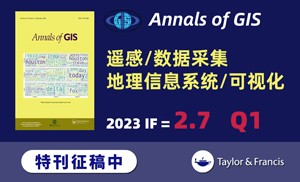





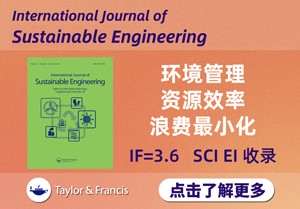
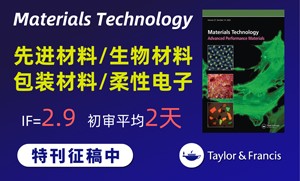

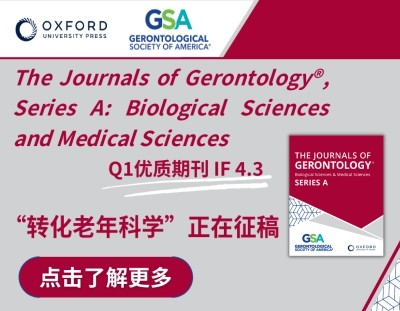
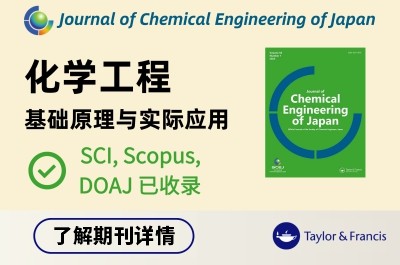


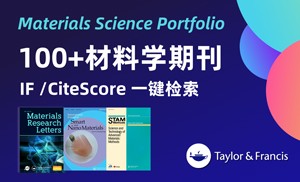
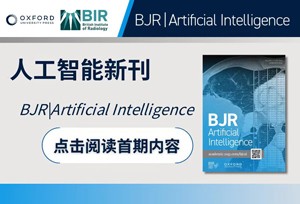




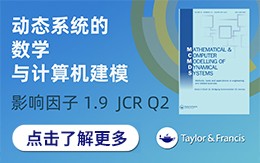



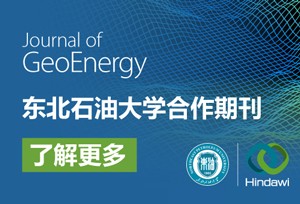
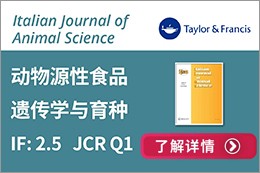
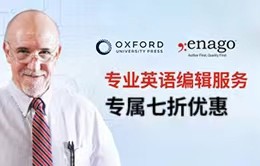



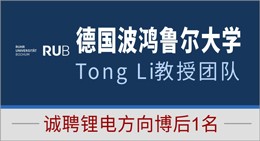

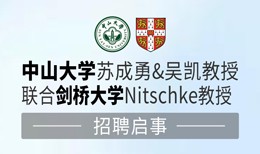







 京公网安备 11010802027423号
京公网安备 11010802027423号